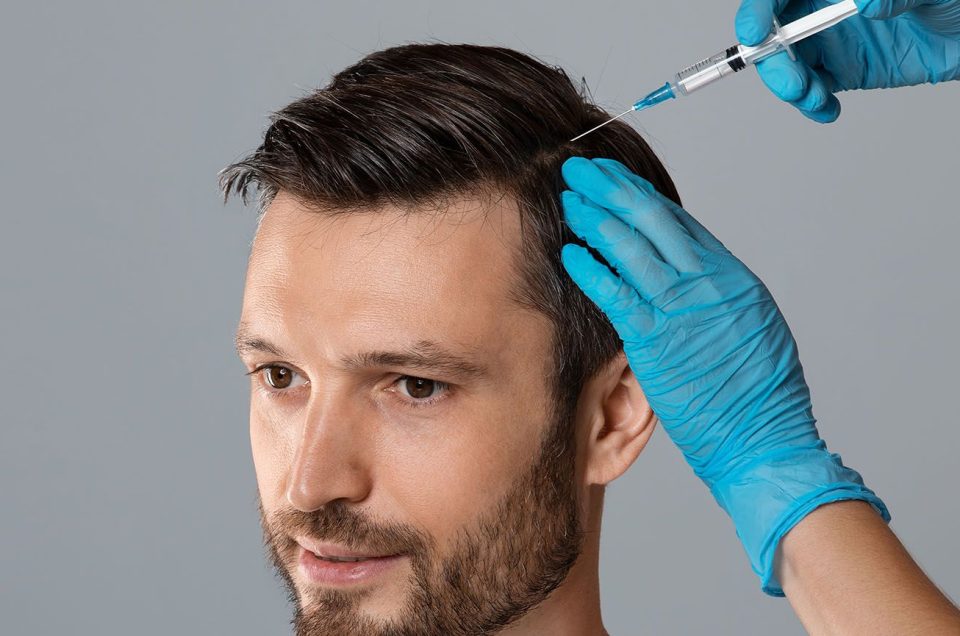Platelet-rich plasma (PRP) therapy has emerged as a promising solution in the treatment of hair loss. PRP therapy, utilizing the body’s own cells to stimulate hair growth, has gained popularity due to its simplicity and the notable results it delivers. Here’s what you need to know about PRP For Hair Loss, including how it works, its effectiveness, and what to expect during treatment.
What is PRP Therapy?
PRP therapy involves drawing a small amount of the patient’s blood, processing it to concentrate the platelets, and then injecting this platelet-rich plasma into the scalp. Platelets are blood cells with several roles to play in injury healing and regeneration. By concentrating these cells and administering them to the scalp, PRP treatments aim to stimulate natural hair growth by increasing blood supply to the hair follicle and increasing the thickness of the hair shaft.
The Science Behind PRP
Platelets contain growth factors that can trigger cell proliferation, speed healing, and stimulate tissue regeneration in the treated area. When it comes to hair loss, the growth factors released by the platelets stimulate dormant hair follicles, encourage new hair growth, and strengthen existing hairs.
Who Can Benefit from PRP?
PRP is most effective for those suffering from androgenetic alopecia—an inherited condition that causes hair thinning, which affects both men and women—and those experiencing hair thinning for other reasons. It’s considered particularly beneficial for people who are in the early stages of hair loss and for those who have active, but weakened, hair follicles.
The PRP Procedure
- Blood Collection: About 20-60 milliliters of blood is drawn from the patient.
- Centrifugation: The blood is then placed in a centrifuge, which spins the blood to separate out the different components. Platelet-rich plasma is separated from the other parts of the blood.
- Activation: The PRP is activated with calcium chloride or a similar agent which causes the platelets to release growth factors.
- Injection: The activated PRP is then injected directly into the areas of the scalp that require hair growth stimulation.
Effectiveness of PRP for Hair Loss
Studies have shown that PRP can be effective in increasing hair count, hair thickness, and the growth phase of the hair cycle. However, as with any treatment, results can vary from person to person. Typically, patients may see noticeable improvement within three to six months of treatment, but this can depend on their individual response to the therapy.
Number of Treatments Required
PRP is not a one-time treatment but rather a series of treatments. Most treatment plans involve sessions spaced 1 month apart, with a total of three initial treatments recommended. After the initial treatment phase, maintenance treatments every 4 to 6 months can help to sustain the growth effects.
Potential Side Effects
The side effects of PRP injections are generally mild and may include mild pain at the injection site, scalp tenderness, swelling, and in some cases, headache. Since the treatment involves injecting the patient’s own blood, there is minimal risk of allergic reactions or serious side effects.
Choosing a Provider
It’s crucial to choose a provider who is experienced in performing PRP treatments. Look for a licensed medical professional, ideally a dermatologist or a cosmetic surgeon who specializes in hair restoration. Ensure that the clinic maintains high standards of hygiene and uses the latest equipment and techniques.
Conclusion
PRP therapy is an innovative treatment that leverages the body’s own healing mechanisms to combat hair loss. While it offers a promising solution for those struggling with thinning hair, it’s important for prospective patients to have realistic expectations and to follow the advice of a qualified healthcare provider. With the right approach, PRP can be a valuable part of an overall strategy to promote hair health and regrowth.








